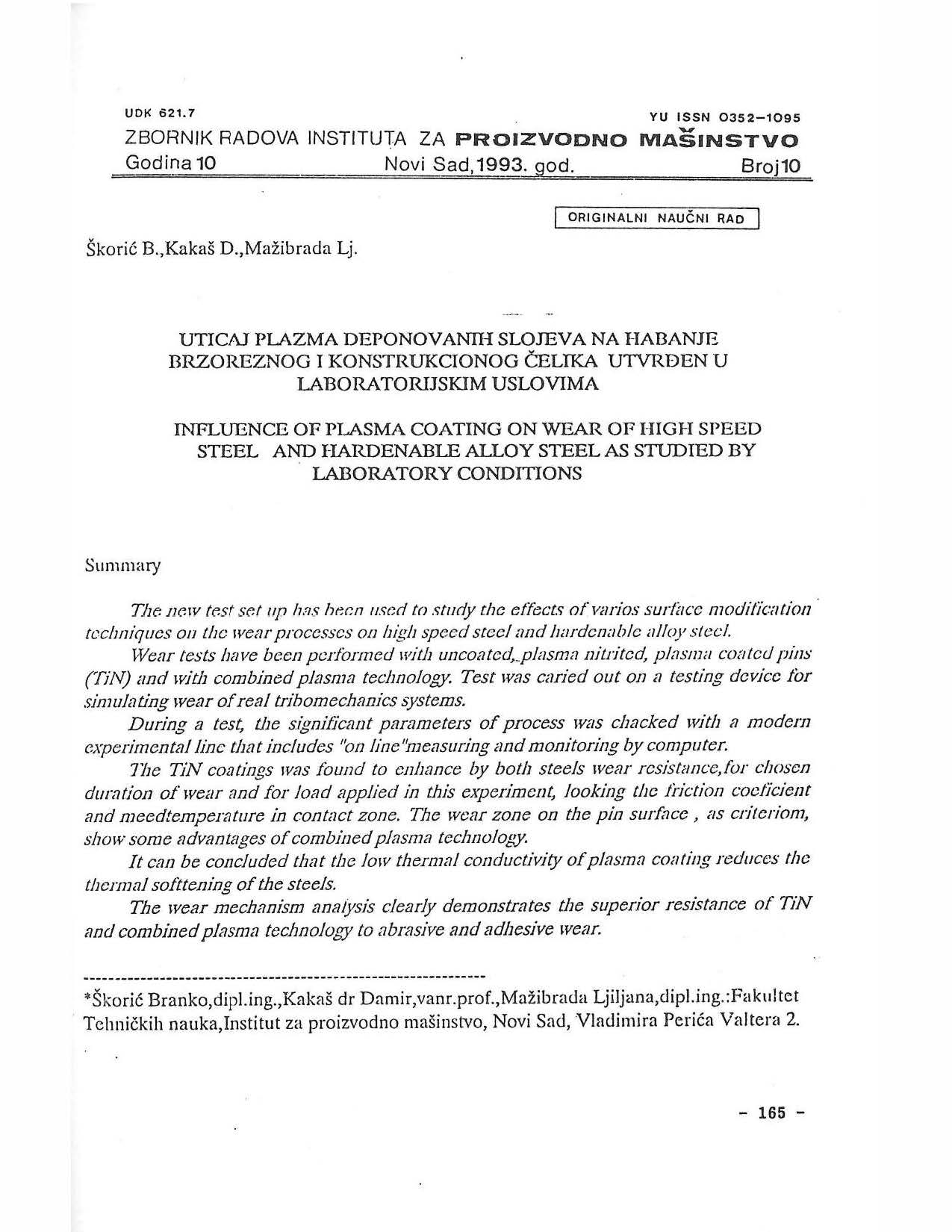Influence of plasma coating on wear of high speed steel and hardenable alloy steel as studied by laboratory conditions

Published 1993-12-01
abstract views: 12 // FULL TEXT ARTICLE (PDF): 5
Keywords
- surface modification,
- hardenable alloy steel,
- high-speed steel
How to Cite
Copyright (c) 2023 Journal of Production Engineering

This work is licensed under a Creative Commons Attribution 4.0 International License.
Abstract
The new test setup has been used to study the effects of various surface modification techniques on the wear processes of both high-speed steel and hardenable alloy steel. Wear tests have been conducted with uncoated, plasma-nitrided, plasma-coated parts (TiN), and with combined plasma technology. The tests were performed using a testing device designed to simulate wear in real tribomechanical systems. Throughout the test, significant process parameters were monitored using modern experimental equipment that includes real-time measurement and computer monitoring. The TiN coatings were found to enhance the wear resistance of both steels for the selected duration of wear and the applied load in this experiment. This improvement was observed by examining the friction coefficient and the temperature in the contact zone. The wear zone on the pin surface also demonstrated some advantages of the combined plasma technology. In conclusion, it can be inferred that the low thermal conductivity of plasma coatings reduces the thermal softening of the steels. The wear mechanism analysis clearly shows the superior resistance of TiN and combined plasma technology to abrasive and adhesive wear.

